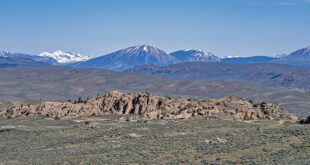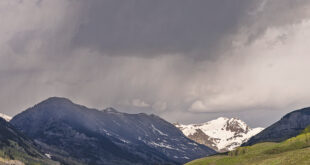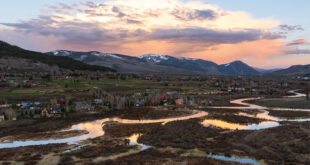They are talking hundreds of millions of dollars in Gunnison County, hundreds of thousands of shrinking or expanding “skier days,” lift tickets that cost nothing, record ski seasons across the continent, declining and growing skier counts at CBMR and, my favorite, a measly 6 percent impact on the local economy from the local ski business. They are the advocates on both sides of the Snodgrass debate, which, as one person termed it this week, has again turned into a “pissing match.” Indeed it has … again.
In the email correspondence pouring into my computer over everyone’s favorite topic this week, people on both sides of the Snodgrass issue have voiced concern about the other side’s use of numbers.
Both sides have stated that the other side is using numbers out of context or presenting only a fraction of the story. Both sides claim the numbers support them and not their opponents. Both sides express frustration at the arithmetic of the other.
Disingenuous. Dishonest. Disillusioning. Words all used to describe their opponents. These sides ain’t getting together over any pie-in-the-sky election season reconciliation project… at least not any time soon and certainly not before the appeal process plays out completely.
David Harsanyi of the Denver Post wrote a column recently quoting a book five decades old. It still applies. Harsanyi writes, “In the entertaining 1954 classic, How to Lie with Statistics, Darrell Huff writes that ‘misinforming people by the use of statistical material might be called statistical manipulation . . . or statisticulation.’ Many statistics, to quote Huff again, get by ‘only because the magic of numbers brings about a suspension of common sense,’” Harsanyi writes.
Neither side apparently believes that could be the case… at least for their case.
Still, that 6 percent number is absolutely ridunkulous whether it’s coming from the FOSM, the RLC, the CLS or the fairies that live in the aspens on Snodgrass. Like it or not, common sense and intuition both are clear that skiing—and everything it brings—is a big part of this valley… economically, socially, emotionally, mentally, and in my opinion—joyfully. This place without a ski area is Lake City. Nice spot but a way different vibe. I like living in a ski town. Does the addition of lifts on Snodgrass make it better or worse? That is the seemingly never-ending debate.
Look, those advocating lifts on Snodgrass tout numbers “proving” there is an overall booming ski industry in America but a sharply declining ski economy in our valley. They promise economic nirvana if three ski lifts are allowed to grace the Snodgrass slopes.
Those advocating the prohibition of lifts on Snodgrass tout numbers “proving” the ski industry as a whole is in major decline but CBMR is actually doing a bit better than its Colorado resort counterparts. They promise spending money on the current ski hill will provide the better bang for the buck and bring sustainable economic nirvana. They claim three lifts on Snodgrass will destroy a pristine wilderness.
Depending on how you measure the numbers, both sides can be viewed as correct. When I bring this up to proponents on either side, they look at me like I’m a monkey that just doesn’t grasp the real reality. Well, call me Chimp and pass the peanuts.
The reality is that we are all at the point where a soft-spoken guy in a green uniform sitting at a desk in Delta will set the new equation for Snodgrass, old numbers be damned. Whether that road is paved and smooth or rutted and full of rocks will be determined after U.S. Forest Service supervisor Charlie Richmond meets with ski area officials next Monday. And don’t forget the possibility of going to court. All the numbers showing the history of this place and the history of the ski industry as a whole won’t really matter. Both sides then might have to argue about the future rather than the past… and those are numbers that have yet to be formed.
 The Crested Butte News Serving the Gunnison Valley since 1999
The Crested Butte News Serving the Gunnison Valley since 1999





